Are you a Quiet Speculation member?
If not, now is a perfect time to join up! Our powerful tools, breaking-news analysis, and exclusive Discord channel will make sure you stay up to date and ahead of the curve.
Splinter Twin is a deck that needs very little introduction. One of the premier combo deck’s since the formats infancy, it has continued to put up results over the entire history of the format. Bannings and unbannings have occurred, but Splinter Twin always rears its ugly head as soon as you tap out on turn three. It has won two of the Modern Pro Tours, and outside of an outright banning of Splinter Twin, will continue its dominance of Modern for years to come.
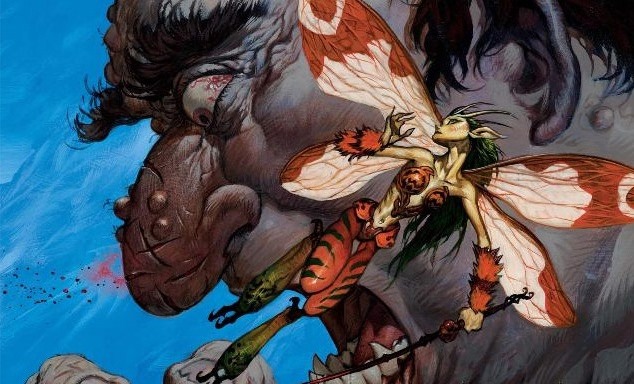
Cast a Pestermite or Deceiver Exarch, untap, attach Splinter Twin, make a million copies and swing for a million damage - pretty straightforward, no? Well, while in theory it is, the deck has so much more going for it, you may not need to win with the combo every time. This primer breaks down what you need to know to succeed with UR Twin.
[wp_ad_camp_1]
Examining the List
Let's start with a look at the list:
UR Twin, by Will Archer
A brief aside – this is my list and as metas vary you may find specific cards better or worse. As the format changes, we could see quite a few cards added or dropped, but for now this is what I’m going with.
 The deck is innately hard to deal with and puts up constant results due to how off-kilter you make your opponent. Turn three forward they can no longer tap out safely, or put themselves at risk of instantly losing. Furthermore, they have to leave up even more mana then the removal cost due to the tapping ability on Exarch and Pestermite. Once we get to this point, the combo is almost unnecessary. The threat of the combo puts you so far ahead once you start “Snapping” back spells, you overwhelm your opponent with card advantage, combined with how poorly they had to use and spend mana the throughout game.
The deck is innately hard to deal with and puts up constant results due to how off-kilter you make your opponent. Turn three forward they can no longer tap out safely, or put themselves at risk of instantly losing. Furthermore, they have to leave up even more mana then the removal cost due to the tapping ability on Exarch and Pestermite. Once we get to this point, the combo is almost unnecessary. The threat of the combo puts you so far ahead once you start “Snapping” back spells, you overwhelm your opponent with card advantage, combined with how poorly they had to use and spend mana the throughout game.
So what allows the deck able to win outside of the combo? The fact that we are playing some of the best cards in Modern (Snapcaster Mage, Lightning Bolt, Cryptic Command). Also, the fact that we run evasive creatures that can slowly chip away at an antsy opponent who needs to be prepared to defend them self from an instant “I win” combo.
With this in mind, we can create a list that takes advantage of all of these factors, as well as including the “oops, I win” combo potential. This leads to a deck that is one of the hardest to play against correctly and enables you to easily take advantage of most of the format.
Card Choices: The Maindeck
The core of the deck has been established for some time now. Deceiver Exarch, Pestermite, and Splinter Twin form the namesake combo of Twin. I prefer the 4-2 split due to the removal resistance Exarch’s four toughness provides, but that could easily be a 3-3 split if you believe you will be winning outside of the combo more often. Snapcaster Mage as a four-of needs little description – it is easily the best card in Modern and turns your one-ofs into twos when needed. He also provides a body for the beatdown plan. Vendilion Clique is also a great card for said plan with its three power, flying evasiveness, and ability that provides an extremely powerful function in a combo deck (you can read about its plethora of uses in a Brainstorm Brewery article of mine). Being able to both put a clock on the board and obtain perfect information is exactly what the deck wants. Knowing when you can simply combo off and win, or what you need to play around, is an oft overlooked piece of the puzzle that people are too quick to cut.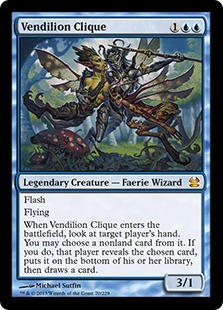
Grim Lavamancer gives you further game and card advantage against any sort of creature decks, and is another card that demands an answer, clearing the way for the combo pieces to safely resolve. Cryptic Command and Remand provide answers to most of the format's problems and card drawing to dig for the missing piece, as well as the best removal and reach in the format in Lightning Bolt. Peek, Roast, Dispeland Spell Snare are one-ofs that round out the deck and are cheap solutions to problem cards. They can also effectively become two copies with Snapcaster Mage.
The land base is fairly typical – 23 lands is acceptable with our high amount of card draw and selection. Sticking to just blue and red keeps the manabase more streamlined and less susceptible to mana issues (as well as allowing the deck to run Blood Moon in the sideboard). The utility lands are also stock – Desolate Lighthouse provides card selection in top-deck wars, and Ghost Quarter provides an easy answer to the problem-lands in the format.
Card Choices: The Sideboard
With the previous mentioned ability of Snapcaster's “doublecounting” spells, we are able to run a multitude of highly effective one-ofs that can be a huge blow in certain matchups.
 Dispel is a very effective card for its mana cost and can provide a large tempo boost when used to counter a Cryptic Command or other high-costed, high-impact instant (such as Sphinx's Revelation or Gifts Ungiven). It shines in many different places, from Burn to the mirror to any other sort of high removal deck. Adding a second on top of the maindecked copy lets you see it reliably in games two and three when needed. Negate and Counterflux provide more of the same – cheap answers to cards that give the deck trouble and the ability to win counter-wars or hard counter early threats like Liliana of the Veil that Remand doesn’t effectively answer.
Dispel is a very effective card for its mana cost and can provide a large tempo boost when used to counter a Cryptic Command or other high-costed, high-impact instant (such as Sphinx's Revelation or Gifts Ungiven). It shines in many different places, from Burn to the mirror to any other sort of high removal deck. Adding a second on top of the maindecked copy lets you see it reliably in games two and three when needed. Negate and Counterflux provide more of the same – cheap answers to cards that give the deck trouble and the ability to win counter-wars or hard counter early threats like Liliana of the Veil that Remand doesn’t effectively answer.
Shatterstorm and Ancient Grudge form an effective combination to bail you out against the hyper aggressive Affinity deck. Affinity can sometimes cause Twin players problems with the habitual “puke hand on turn one” play. Ancient Grudge provides selective removal that is easily flashed back off the Stomping Ground in the main, giving you lots of time to draw into the combo.
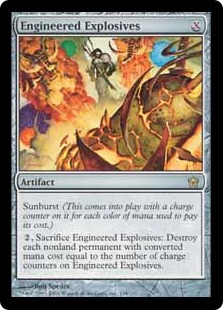 Engineered Explosives does much of the same – cheap, effective, sometimes board-wiping removal. At one or two (or even three with said Stomping Ground), Explosives can easily wipe a board and provide huge card advantage as well as the turns you need to win the game. It's great against Zoo, Merfolk, Elves, and many of the tribal, hyper-aggro style decks. Anger of the Gods provides another sweeping answer, adding on the often needed “exile” clause.
Engineered Explosives does much of the same – cheap, effective, sometimes board-wiping removal. At one or two (or even three with said Stomping Ground), Explosives can easily wipe a board and provide huge card advantage as well as the turns you need to win the game. It's great against Zoo, Merfolk, Elves, and many of the tribal, hyper-aggro style decks. Anger of the Gods provides another sweeping answer, adding on the often needed “exile” clause.
Spellskite is a nod to the large amounts of removal some decks play, providing a secondary card that your opponent may have to deal with before they can deal with the combo. Spellskite also protects the more essential hate cards out of the board. Because Spellskite is often a poor top deck in the late game, we only run one in the board.
The ability to run Blood Moon is what keeps me on the blue/red version and not splashing the popular black or green. A very high impact card in a format full of shaky (at best) manabases that are extremely reliant on fetchlands, a slammed Moon on turn three can just win you the game. Having the same impact against Tron as well as Amulet enables this card to be highly valuable, and it should be resolved as carefully as one would resolve Splinter Twin.
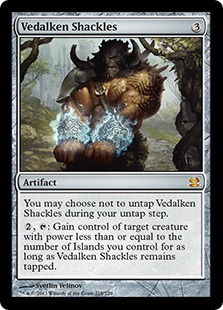 Vedalken Shackles and Teferi, Mage of Zhalfir are somewhat niche cards that can often provide huge swings in your favor. Shackles are great in the non-Grixis mirror (due to Kolaghan's Command) that can sit and demand an answer before the opponent can go off. Outside of that, Shackles also enables you to force your opponent’s creatures to run into each other while you craft a winning hand. Teferi is very niche but a game changer. If resolved, he forces your opponent to play at sorcery speed for the rest of the game, at least until they have the answer, effectively putting them a turn behind at everything or forcing out “scared” removal onto your combo piece. Finally, Keranos, God of Storms provides an unanswerable threat against Jund and Abzan, two of the more difficult matches due to their large amounts of removal.
Vedalken Shackles and Teferi, Mage of Zhalfir are somewhat niche cards that can often provide huge swings in your favor. Shackles are great in the non-Grixis mirror (due to Kolaghan's Command) that can sit and demand an answer before the opponent can go off. Outside of that, Shackles also enables you to force your opponent’s creatures to run into each other while you craft a winning hand. Teferi is very niche but a game changer. If resolved, he forces your opponent to play at sorcery speed for the rest of the game, at least until they have the answer, effectively putting them a turn behind at everything or forcing out “scared” removal onto your combo piece. Finally, Keranos, God of Storms provides an unanswerable threat against Jund and Abzan, two of the more difficult matches due to their large amounts of removal.
Cards That Didn't Make the Cut
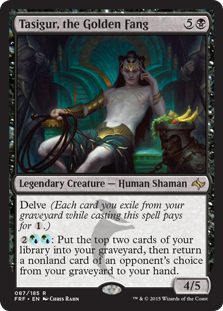 Splashing a third color
Splashing a third color
Green or black are very common additions to the deck, providing highly cheap and effective cards (such as Tasigur, the Golden Fang and Tarmogoyf) to create further "must-answer threats" that attack on many different fronts. These versions are not necessarily better or worse than UR Twin, but they are functionally different. I would consider them a separate deck and require further, deeper explanation.
- Gitaxian Probe
Paying two life as an alternate cost is handy, but being (somewhat) greedy in such an aggressive format, as well as sorcery speed, inclines me to go with the instant speed Peek for the ability to see an extra (and sometimes game changing) card.
- Tectonic Edge
Edge is in a bad spot right now. The "land-combo" decks in the format often are going off before they have four lands on the board (Tron is assembled at three lands and Amulet can go off with as little as two). As such, Ghost Quarter is a strict upgrade as the basic land is either not in the deck or very low impact.
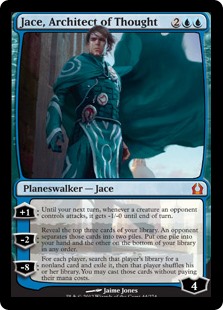 Jace, Architect of Thought
Jace, Architect of Thought
Often a one-of in the board, Jace is mostly a relic of the Abzan dominance and not otherwise having a good solution to Lingering Souls. With Abzan no longer part of tier 1 and Jace aligning very poorly against the more grindy style of decks as of late, the planeswalker is low impact and easily dropped.
- Blood Moon in the maindeck
Moon occasionaly shows up in the maindeck of UR Twin, but I would caution against this. Not only does it do nothing against a large part of the field, drawing the second copy is painful. While against some decks it is a slam dunk, having two slots that can be almost no impact against half of the metagame is a tough call to make, and one I personally am not comfortable with in the current field.
Next Level Playing Tips
General Deck Tips
- Don’t get cocky, Kid
The potential to win the game on turn four is quite tempting, and sometimes they just don’t have an answer. Even so, don’t risk it all for no reason. Just as we can instantly win the game, getting two-for-oned that early can instantly lose us the game or, if not instantly, over the span of a few turns. An advantage we always have is the threat of the combo. Don’t assume we always have to go for it.
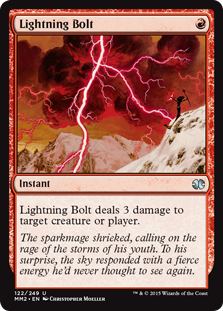 Bait removal/Create tempo
Bait removal/Create tempo
We can easily get an idea of what they have going on by flashing in an Exarch or Pestermite. If you can use it to create tempo advantages by tapping a land in the upkeep or merely preventing an attack, sometimes this gains you more than waiting for the combo potential even if it instantly dies. At the heart of it we are a deck that creates large tempo gains and rewards pilots who can see past the combo and into the strict tempo and card advantage.
- Know your role
I stated this in my previous primers, but the idea continues here (and in most decks). Know when you are the beatdown or when you are the control deck. Twin can shift gears into aggro, control, and combo as needed and encompasses elements from all three archetypes, so use this to your advantage and quickly identify which you are in a matchup. This versatility (elaborated much further in two Nexus articles by Jordan Boisvert) is what makes the deck so powerful.
- Watch out for punishing effects
As the most visible combo deck in Modern, quite a few cards can punish the inexperienced player. Watch out for the common hate cards and don’t run into them. It can be fun to hit your opponent for a million damage, until they cast a Rakdos Charm and make you take a million when just 15 would have done and kept you alive.
Single Card Tips
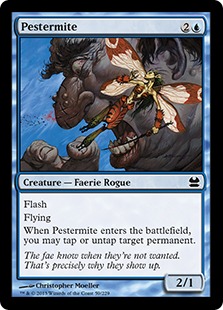 Deceiver Exarch and Pestermite
Deceiver Exarch and Pestermite
Exarch's and Pestermite's tap abilities have so many uses I couldn’t list them all if I tried. They reward players who know the format and using them is often more than merely tapping a land at the end of turn. Of note include tapping Tron lands on upkeep to stop turn three Karn Liberated/Wurmcoil Engine, providing more turns to draw the missing puzzle piece by effectively fogging attacks, and even untapping your own permanents for surprise blockers.
- Vedalken Shackles
Shackles can be used even more efficiently with the untap abilities. Untapping it with Exarch/Pestermite enables you to “steal” another creature when needed, and can surprise your opponent as they usually concentrate on the “only on upkeep” clause.
- Grim Lavamancer
If needed, you can get double Lavamancer activations with the untap ability from Pestermite and Exarch to kill an x/3 or x/4 creature.
 Remand
Remand
Remand is sometimes more useful on your own spell! If they try to Dispel your Cryptic Command, for example, Remanding the Command keeps your Command, draws you the card, and fizzles the Dispel.
- Serum Visions
Watch your sequencing with Visions. It is agonizing to watch players cast a Visions, scry to the top, and then realize they needed to crack a fetch and shuffle them away.
- Splinter Twin
You don’t have to always save them for combo creatures! Sometimes casting Twin on a Snapcaster Mage for constant flashbacks, or on Clique to have continuous card selection, is enough to win the game.
- Snapcaster Mage
Know what is in your graveyard so you don't have to pick it up and look when you draw into a Snapcaster Mage – this is one of the most easily telegraphed cards. Don't give your opponent any free insight into your hand or draws.
- Cryptic Command
Command's last ability is so often overlooked it is frightening. Bouncing a permanent (even a land!) can create huge tempo swings when combined with the other modes. Don't default to counter/draw. Take a good look at the board state and see what combination is most useful.
Sideboard Guide
Jund/Abzan
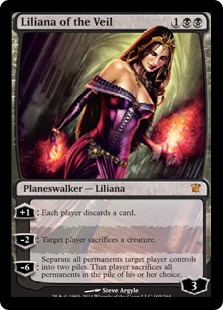 OUT
OUT
-2 Deceiver Exarch
-3 Splinter Twin
IN
+1 Keranos, God of Storms
+1 Spellskite
+2 Blood Moon
+1 Vedalken Shackles
Easily the deck's worst matchup. Tons of removal, plus discard, plus Liliana of the Veil put us in a bad position right out the gate. Thankfully, sideboarding plans are easily predicted and usually only consist of them bringing in more removal. We side into our heavy hitters – all these cards are high impact and all of them can be protected from removal by Spellskite. A quick Blood Moon can seal the game, and if you can keep Keranos away from discard, his resolution is usually the nail in the coffin.
Affinity
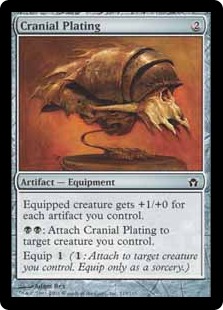 OUT
OUT
-4 Remand
-1 Vendilion Clique
IN
+1 Shatterstorm
+2 Ancient Grudge
+1 Anger of the Gods
+1 Engineered Explosives
A favorable matchup. Out of the board, we have tons of removal, coupled with the low amount of interaction they have (apart from Galvanic Blast), makes the combo (mostly) safe to resolve. Exarch and Pestermite can fog big swings too, so if you can survive the first few turns you are usually winning.
Burn
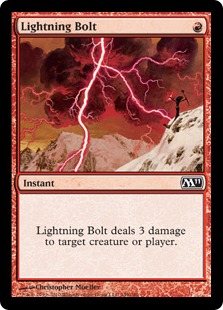 OUT
OUT
-4 Remand
-1 Cryptic Command
IN
+1 Engineered Explosives
+1 Dispel
+2 Negate
+1 Anger of the Gods
Burn is mostly a race. Burn's relevant interaction is usually three damage, so killing Deceiver Exarch usually requires two spells. Due to Burn's low land count, if you can keep them to only one or two mana, you can often safely resolve the combo. Anger of the Gods can come in against the creature heavy versions running Wild Nacatl.
RG Tron/Amulet Bloom
 OUT
OUT
-1 Lightning Bolt
-1 Roast
-2 Electrolyze
-1 Grim Lavamancer
-1 Dispel
IN
+2 Negate
+2 Blood Moon
+2 Ancient Grudge
I lump these together as the sideboarding plan is very similar. We bring in Moon and Negate, as well as Grudge, to deal with the problem artifacts. Outside of landing Blood Moon, Remand is effectively a Time Walk. Tapping abilities are at a premium for keeping both decks off high volumes of mana. These decks' low interaction counts before board usually allow you to safely combo them out at your leisure.
Infect
IN
+1 Anger of the Gods
+1 Engineered Explosives
+1 Vedalken Shackles
+1 Spellskite
Infect is another favorable matchup where we side out Remand and bring in the removal package, as well as Spellskite to redirect pump spells. This is another deck where tap-downs before attacks become an effective Time Walk. Outside of Dismember, the deck is mostly light on removal and assembling the combo is usually a safe affair.
Grixis Control/Twin mirror match/UWx Control
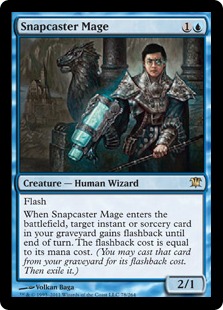 OUT
OUT
-4 Remand
-2 Electrolyze
-2 Splinter Twin
IN
+1 Vedalken Shackles
+1 Keranos, God of Storms
+1 Counterflux
+1 Dispel
+2 Negate
+1 Teferi, Mage of Zhalfir
+1 Blood Moon
In these matchups, our post-board plan is to transform into a blue/red control deck. With the high amount of counterspells and interaction these decks have, resolving the combo is rarely successful. Post-board, we become the far better deck, able to run huge trumps the other decks cannot, such as Blood Moon and Teferi. Vedalken Shackles should be left at home against the Grixis versions (Kolaghan's Command), but is an all-star against the non-black splashing variants.
Company Variants (Elves, Abzan Company, Naya Company, etc.)
 Out
Out
-4 Remand
IN
+1 Anger of the Gods
+1 Vedalken Shackles
+1 Engineered Explosives
+1 Dispel
What to side out in these games is a very case-by-case basis depending on the deck's contents. More removal is usually brought in as they tend to litter the board early with mana dorks. Depending on the list the removal they bring is only 3-4 cards, so the combo can bail you out against a very aggressive board. Remand is pretty poor as they can just untap and main phase Collected Company, so Dispel can be a cheap hard counter.
Merfolk
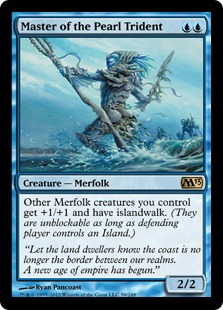 OUT
OUT
-4 Remand
IN
+1 Anger of the Gods
+1 Engineered Explosives
+1 Spellskite
+1 Vedalken Shackles
Merfolk is a tough matchup due too a very quick, usually unblockable clock, and cheap interaction. An early stumble allows them to overwhelm the board and swing for huge chunks at a time. Between Aether Vial and Cavern of Souls, our counterspells are near useless so they come out easily in games two and three. We add more removal, as blocking is not usually happening due to islandwalk. If you see an opening take it, but be prepared for lots of cheap interaction. Coupled with the new Harbinger of the Tides, that can be flashed or Vialed in, going for the combo can be dangerous.
Conclusion
Splinter Twin isn't going anywhere, and is easily the best deck in the format at any given time. It rewards the pilot who knows the format, interaction, and meta with easy wins out of nowhere as well as games where you run them over with overwhelming tempo generation and card advantage. With only a few unfavorable matchups, and a mirror match that easily rewards the higher skilled pilot, this a deck is an easy choice for the advanced player looking to make a mark in the Modern format.
As always I hope this primer was helpful and let me know in the comments if you think I missed something!


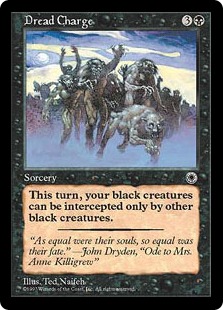
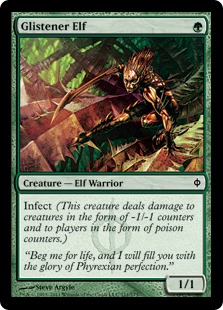



amulet bloom primer!!! =D
We’ll keep trying to roll out primers on a regular basis, and Amulet Bloom will be coming before too long.
YAY!
I feel like I just got worse at UR twin.
Just checking: did the article make you feel this way because it gave you all these cool new tips you hadn’t thought of before? Or because it gave bad advice? If the latter, definitely let us know what you didn’t agree with and thought could have used improvement.
Because this article is complete trash. The sideboard “primer” and I use that word lightly, is garbage?
Taking out remand against control mirror is just crazy
I’m not sure how that is. Why would you want a remand rotting in your hand when you could have threats?
Cause you can remand your own spells and gain value, also can remand bombs like Jace or Keranos…
And flashbacks spells
I agree that taking out Remands against almost any blue deck is crazy. Maybe Delver variants, but that’s only a maybe.
Experience: 1.5 years with various iterations of Twin, starting just before the Dig Through Time era.
DTT was released less than a year ago, by right before do you mean the release of BNG?
Hey! In hindsight it’s probably right to leave in 2 or so against any of the delve-based control decks, but you totally want more hard counters in these match ups.
Nice article, though I tend to agree with the others on the Remand thing.
A bit more of an obscure question, but how does UR Twin deal with Utron? Seems like a very rough match-up. Outside of getting lucky and hoping they don’t have an answer to the combo (of which they have many), or playing as aggressive as possible (i.e bolt snap bolt), it doesn’t seem very favorable to us at all.
In hindsight, it’s probably right to leave in 2 remand against the control decks running the delve creatures! Tron is actually pretty good – tapping the tron lands on upkeep keeps them off the Karn/Wurmcoil for awhile, and the interaction game one is next to nil outside of O-Stone.
Yeah, GR tron is a great match-up. But I’m asking about Utron, or Mono Blue Tron. They don’t run Karn (Karn is pretty bad when you play it outside of T3/T4), don’t prioritize getting tron asap (they can win a lot more games without tron than GR tron can), and run a plethora of interaction in comparison to GR tron.
UTron is fun, but extremely difficult to beat as UR Twin. I think Will doesn’t know UTron that well I guess… At any rate, you want to side out the combo first and secondly tempo them out. You want to transform into a tempo deck which means bolt-snap-bolt, using Clique as a beater, bring in dispels, negates, and even Keranos to just jam a grindy threat.
I don’t know if your testing has shown that grixis control is a favorable matchup for you, but I believe the general consensus is that the twin matchup is in grixis control’s favor, with a win rate of 59%
Hi! I’m playing twin from 4 years now. Unfortunetly i can’t agree with part of this primer.
Here’s the list i am playing now:
Creatures 13:
4 Deceiver Exarch
4 Snapcaster Mage
2 Pestermite
2 Vendilion Clique
Inst/sorc/ench 24:
4 Lightning Bolt
4 Serum Visions
4 Remand
4 Splinter Twin
2 Cryptic Command
2 Dispel
1 peek
2 Spell snare
2 Electrolyze
Mana Base 23:
4 Scalding Tarn
4 Polluted Delta
3 Steam Vents
3 Sulfur Falls
1 Breeding Pool
5 Island
1 Mountain
1 Desolate Lighthouse
1 Cavern of souls
Sideboard 15:
1 Engineered Explosives
2 blood moon
2 Anger of the gods
2 Ancient Grudge
1 Spellskite
1 Dispel
1 Teferi, mage of zalafir
1 Counterflux
1 Grim Lavamancer
2 Keranos, god of storms
1 Roast
IMO sideboard guide in this primer is kinda wrong. If i would play Will’s deck my sb guide will look more like this:
Jund/Junk:
This MU always was bad for UR Twin. IMO sideboard in this deck is poor against them.
Board-in: 2x Blood Moon; 1x Keranos; 1x Teferi; 1x EE; 1x Negate; 1x Counterflux;
Board-out: 3x Twin; 3x Deceiver; 1x Peek
They have over 9000 thousand removal and discard so trying to combo-off is a nightmare. After sideboard we are going to play UR control with keranos as a win-con. A bunch counterspells is good idea in this matchup.
Affinity:
board-in: 1x Shatterstorm; 1x Explosives; 1x Spellskite; 2x Grudge; 1x Anger; 1x Shackles
board-out: 4x Remand; 1x Dispel; 1x Peek; 1x Clique
Shatter and grudge are obvious here, EE and anger are our additional sweepers. Spellskite is must-be card cause it’s only thing in deck that can block etched champion. Shackles are intresting here as they can stole they champion and give us few turns of live.
Remands are just bad in this mu, they’re giving us nothing except draw 1 card. Would you play instant card “draw 1 card” for 2 mana? Peek, and clique. We dont need hand information in this mu cause they usually don’t have cards on hand. Dispel is another poor card. After sideboard we probably have between 4-8 targets for it and those targets are not rly important.
Just try to stabilize situation on board and then comfortible combo-off
Burn:
MU favorable for us but also skill testing for both players.
Board-in: 1x Dispel; 1x spellskite; 2x Negate; 1x counterflux; 1x anger;
Board-out: 1x Vendilion; 4x Remand; 1x Roast;
Counterspells are our most advantage here so we should use as many as possible (except remands, same situation i wrote for affinity). If they can’not remove spellskite you probably will get easy win. Try to combo-off them and stay tuned for 4x Destructive revelery from them. (Why in this list is only 1 spell snare :/???)
Tron/bloom:
Here i can agree with Will about sideboard but I will add counterflux and dont remove dispel as i can destroy amulet bloom “hive-mind” plan and can stop tron from destroing our mana base with boil.
Infect:
Board-in: 2x Blood moon; 1x Anger; 1x EE; 1x Shackles; 1x Spellskite; 1x Dispel; 2x Negate; 1x Grudge
Board-out: 4x Remand; 1x peek; 2x clique; 1x Deceiver; 1x Twin; 1x Crypitc;
In this matchup we want to stabilize board situation and then play our combo for free win. Blood moons are great here cause they can win game for us, also they are turning off inkmoth nexus and pendelhaven. Counterspells are here to counter they creatures boosts. Grudge is dedicated for they spellskites they will bring against us.
Grixis/ UWx:
I played grixis for few months now and board-out remands sounds like joke for me…
No comment here.
Board-in: 1x Dispel; 2x Blood moon; 1x negate; 1x Teferi; 1x Keranos; 1x Counterflux
Board-out: 3x Twin; 3x Deceiver; 1x Peek;
It’s another mu where you are probably not able to win by combo. They have too many removals and counters. Again here we go with control plan. (don’t play blood moon against UR twin)
Moon is rly intresting in MU with grixis. If they did not expect moon its just free win for us. It’s not best card here but it give huge advantage when is played correctly.
Twin:
Totally depending on deck your opponent’s playing.
COCO variants:
Here is fine in primer. (but i would think about playing moon here :D)
Merfolk:
Fine. (again +1 moon here. Just to stop them from hitting us with mutavault)
P.S Sorry for my bad english

P.S 2. Pestermites are better against “abrupt decay” meta and Deceiver is better against current “bolt, bolt, bolt everywhere” meta
P.S 3. Thank for reading this
P.S 4 I’m reading modernnexus from “grixis” articles. I love this site ^^
Wow I’m pretty sure I just lost most of my brain cells. This is the worst guide I have ever read in my life. I would stop playing magic if I was you and pick up baseball cards at least you don’t have to play an intellectual game with them.
this list is suboptimal and your sideboard advice is actively bad.
3-4 dispel is mandatory in this deep blue metagame.
shackles is a bad batterskull and even batterskull is unplayable right now.
shatterstorm is a bad ancient grudge.
why are we leaving in dispel against abzan and affinity but siding it out against infect?
why are we boarding in blood moon against twin and leaving it on the sidelines against infect?
why would we want spellskite against jund? why would we leave it out against affinity and burn?
why on god’s green earth would you take out dispel against amulet bloom?
why would you cut remand in the snapcaster mirror?
why are we leaving in so many lightning bolts against everyone? what does lightning bolt do against amulet bloom or grixis control or UWR? why are we cutting electrolyze against snapcaster decks? do we really expect lightning bolt to be better against opposing snapcasters than electrolyze?
why do we ignore the importance of ancient grudge against collected company and infect?
Why keep in any decievers against jund? Because this guy is a numnut.